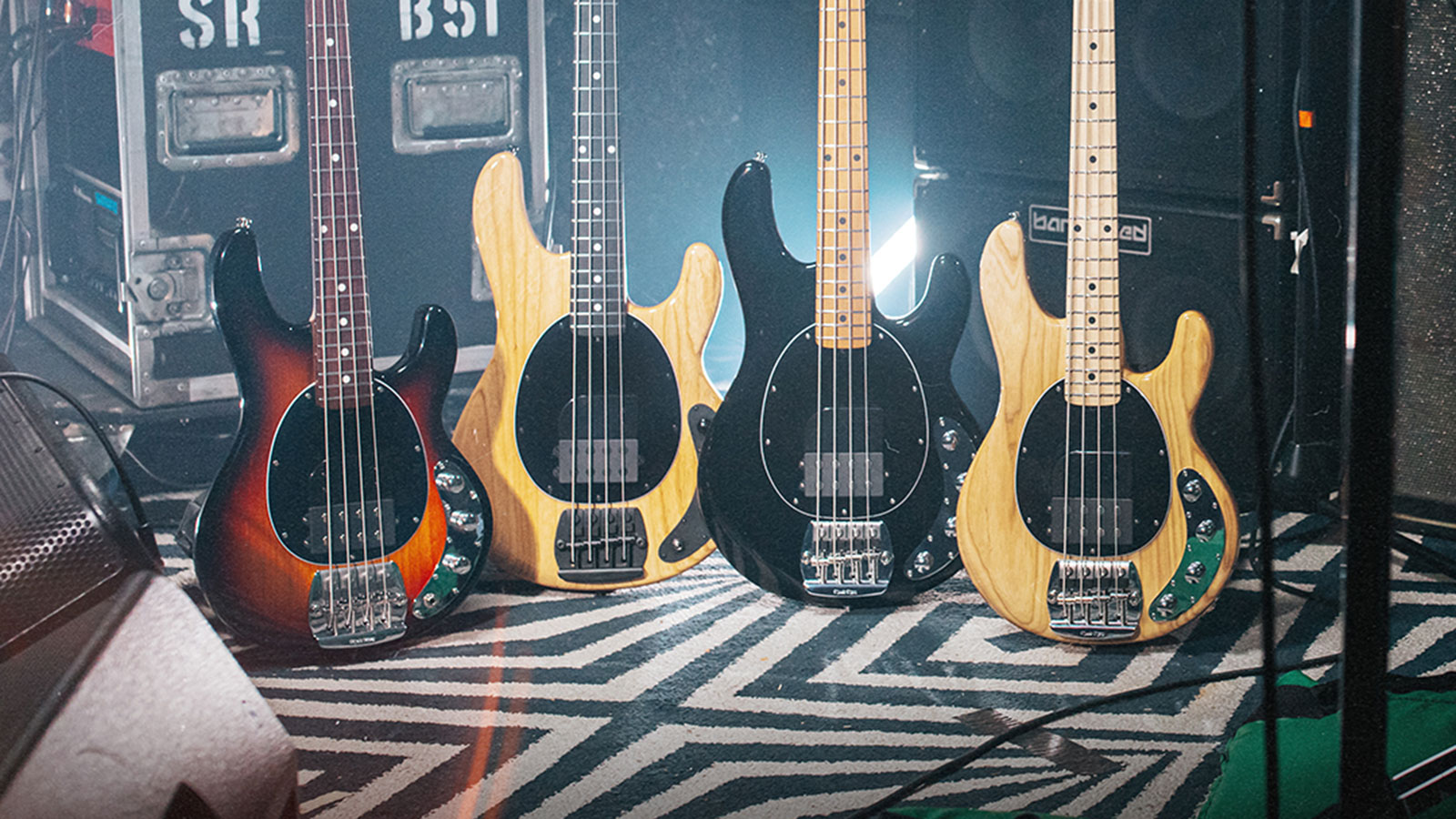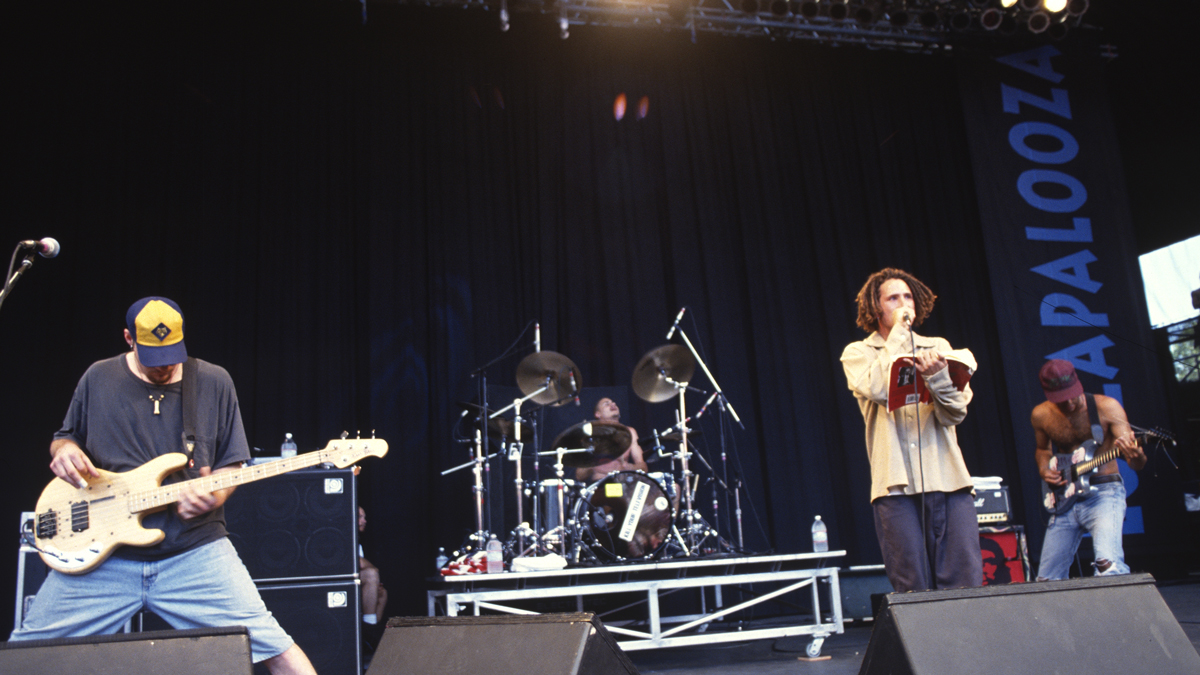Tim Commerford: "I’ve always shied away from having basses made for me, but with Music Man I’m really happy to say that this is a bass I’m part of"
The Rage Against the Machine bassist breaks down his tricked-out Ernie Ball Music Man Artist Series StingRay

“Man, I can’t wait for people to see this bass,” says Tim Commerford when we speak to him prior to the launch of his signature StingRay bass guitar. “It’s so beautiful. It does everything I need, and way more. I’ve played some beautiful basses in my time, but this one has to be one of the very best ones that I’ve ever played. Ernie Ball really did a spectacular job on it. We went back and forth on it until we got it perfectly right.”
For the past three years, Ernie Ball Music Man has been steadily introducing signature instruments for heroes of the low end, including Vulfpeck’s Joe Dart, Dream Theater’s John Myung, MxPx’s Mike Herrera, and AC/DC’s Cliff Williams. Each one uses the basic template of an existing model with slight tweaks to personalize it to the player. So far, that has mostly meant streamlining electronics and controls.
Their latest collaboration with Tim Commerford follows the same blueprint except for the less-is-more concept. Instead, the Rage Against The Machine, Audioslave, and Prophets of Rage bassist has worked with the company to come up with four variants of the StingRay: a passive full-scale, an active full-scale, a passive short-scale, and an active short-scale.
The basses all have standard pickups and controls and have been streamlined in production numbers: each version is limited to just 50 units worldwide.
Aside from what we think of as a classic StingRay, there are two main features that are unique to Commerford’s new axe.
First is the height-adjustable finger ramp, which sits snugly against the bass’s single neodymium humbucker. It offers an extra couple of inches of thumb real estate to find your sweet spot for plucking. Its height is set simply with four screws to line it up with your pickup. Conversely, you can lower it all the way to be flush with the pickguard.

“I was 18 years old when I first saw a Music Man StingRay,” explains Commerford. “It was a blonde one with a black pickguard, it was at a pawnshop, and it was $300. I wanted it so bad, and I scraped up the money, and I got it. That bass was the one that I used to record the first Rage record, and it was a big part of my life.
Get The Pick Newsletter
All the latest guitar news, interviews, lessons, reviews, deals and more, direct to your inbox!
“At that time I was pretty much glued to playing right over the pickup, but I’ve learned to play in different ways so my hand is more comfortable, so I added a piece of plastic to the pickguard. This wasn’t anything like we’re seeing on the new bass, which is the most high-tech version of a ramp and the most comfortable place I’ve ever put my hand on a bass guitar. I’m blown away by it!”
The second new feature is the adjustable mute pads built into the bass’s bridge. First found on early StingRay models, the system gives each string its own foam pad that can be raised or lowered, using a thumbscrew. The screws sit directly under the string, so you have to reach in between the strings to adjust.
“This bridge is the most incredible thing to me,” explains Commerford, “because it has these mutes on it – and the mutes, as someone who enjoys playing with distorted bass, in layman’s terms these mutes eliminate all the noise that you don’t want to hear. There’s certain noises that I like, and certain ones that I don’t, and this is the only bridge that does that.”

As it turns out, the bass had been six years in the making after Commerford reconnected with the brand prior to the advent of Prophets of Rage.
“Back in 2015, I was approached by Brian Ball, who’s the grandson of Ernie Ball, and he wanted to make me a bass,” he recalls. “He gave me this Music Man StingRay – I think they call it the HH model. I was blown away by the construction, by the way that it sounds, the way it plays acoustically in my living room. I plug it in and I have to drastically change my settings on my amps: It sounded really, really good with my setup.
“For Prophets of Rage, Music Man made me these StingRays, which are the HS models. They are the closest thing I have ever felt to a Steinberger bass. There isn’t a single dead spot on the neck, because they have this integrated nut so everything on the bass is just smoothed out. When it comes to hitting really hard, you don’t have to worry about your fingers hitting a sharp magnet or anything like it. Everything is just so solid and they just feel really good.”
Of course, this isn’t the first time Commerford has been approached to make a signature bass – far from it – but it was the company's values that finally sealed the deal.
“Over the years, people have come to me and told me they wanted to make a bass for me, and I’ve always shied away from it, but with Music Man I’m really happy to say that this is a bass I’m part of, and that it was not made using exploitation of humans,” he enthuses.
“It was made in a really awesome factory in San Luis Obispo where people are looked after and are happy. That happiness shows in how beautifully this instrument is made. This is the dopest bass that you can get!”
- Head to Ernie Ball Music Man for more info on the Tim Commerford Artist Series StingRay.
“I asked him to get me four bass strings because I only had a $29 guitar from Sears”: Bootsy Collins is one of the all-time bass greats, but he started out on guitar. Here’s the sole reason why he switched
“I got that bass for $50 off this coke dealer. I don’t know what Jaco did to it, but he totally messed up the insides!” How Cro-Mags’ Harley Flanagan went from buying a Jaco Pastorius bass on the street to fronting one of hardcore’s most influential bands










